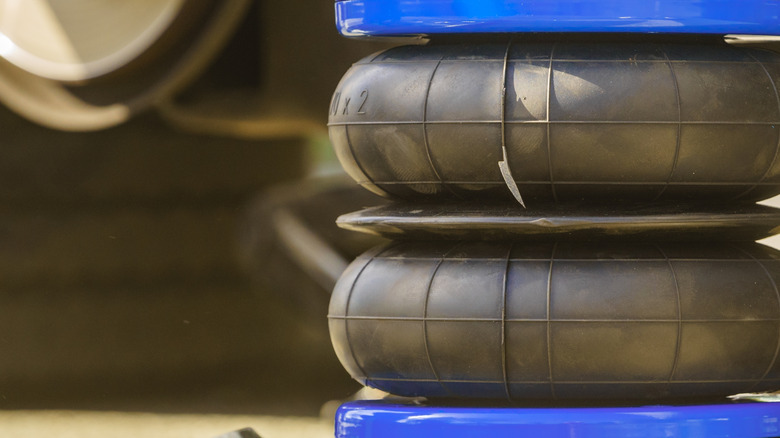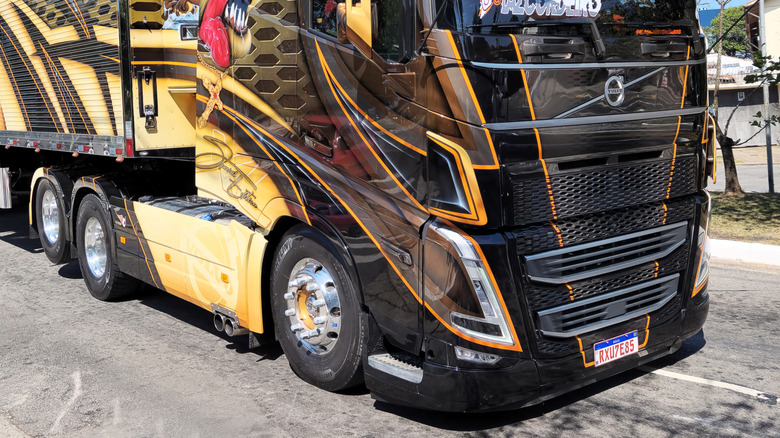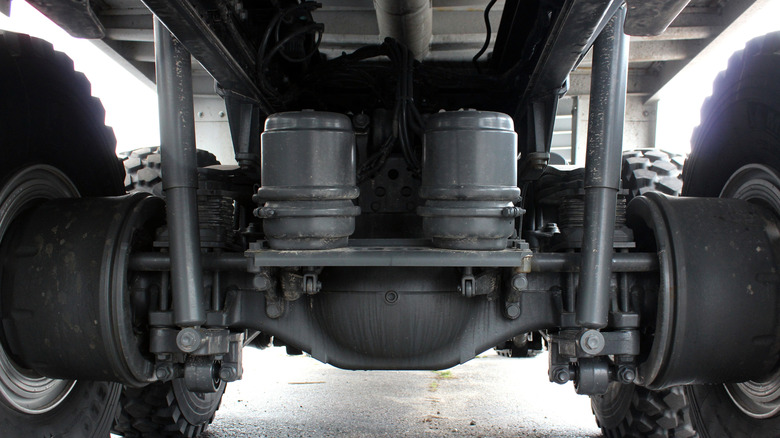Air Suspension Systems: How They Work & Why Semi-Trucks Use Them
Every vehicle has its own suspension system, a collection of springs, shocks, and bars that keep the vehicle level and keep the tires on the pavement at all times. Remove a vehicle's suspension, and the ability to control and drive the vehicle diminishes almost entirely. When passing over the road, cars and trucks come across bumps and irregularities that cause the tires to rise above the road. Without a suspension, that transfer of power would continue into the frame of the vehicle, potentially making the car and driver bounce.
Air suspensions initially became famous for their implementation in military aircraft during World War II. Instead of using springs and shocks like a typical suspension, they use electric pumps or compressors that push air into reinforced rubber air bags. Those bags are inflated to specific pressure depending on the amount of weight in the vehicle. A number of air suspension systems can also be manually adjusted so a driver can determine which ride height works best for you.
One of the most important uses for air suspension systems is in semi-trucks, which are hauling massive amounts of equipment across the country. The invention of air suspensions gave semi trucks more capability when it came to hauling heavy loads. The ability to change suspension levels in response to how much a semi is carrying allowed for increased loads and a more comfortable drive.
Benefits to air suspensions in semi-trucks
As mentioned earlier, air suspension systems saw a rise in popularity for military aircraft during World War II. Though it's difficult to narrow down exactly when semi-trucks began using air suspension, it's believed that they began using them during the 1960s. Air suspension systems provide a number of benefits for semi truck drivers, including a more comfortable ride due to less vibration and noise from travel.
Another way the limited vibration from the air suspension helps is by causing less wear and tear on the suspension system itself, as well as helping trailers last longer due to the lesser vibrations. Using an air suspension improves the vehicle's ride height, depending on the vehicle's weight and speed. Air suspensions also allow vehicles to take corners at higher speeds.
Drivers can also adjust their air suspension systems to their own preferences, whether it's for a softer ride on a highway or stiffer ride on pothole-ridden roads.
Drawbacks to air suspensions in semi trucks
Air suspensions bring a number of drawbacks to using one instead of a traditional suspension system. The biggest and first drawback to using an air suspension system is the initial cost of purchasing one, as they can run over $6,000. You also need to purchase fuel for running the air suspension compressors.
As with all systems that hold pressurized air, the potential for a leak is always possible. A leak in your air suspension can result in a malfunction, leading to more money being spent on repairs to your suspension and possibly the rest of the vehicle.
There are also a few common issues that occur with air suspensions, including rust appearing inside the system that can lead to damage on the air bags. Another potential issue is the tubing that connects the air bags and compressors failing, or the compressor burning out due to not running properly.
However, all suspension systems come across mechanical issues. The benefits of an air suspension system are absolutely worth the potential drawbacks.


